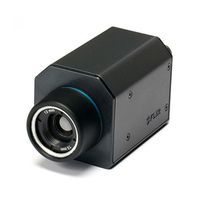FLIR RAYMARINE E125 Touchscreen Display Manuals
Manuals and User Guides for FLIR RAYMARINE E125 Touchscreen Display. We have 1 FLIR RAYMARINE E125 Touchscreen Display manual available for free PDF download: Operation Instructions Manual
FLIR RAYMARINE E125 Operation Instructions Manual (426 pages)
LightHouse II
Brand: FLIR
|
Category: Touch Panel
|
Size: 12.55 MB
Table of Contents
-
-
Controls31
-
Touch Icons36
-
Pages40
-
Applications41
-
-
Menus42
-
Dialogs43
-
Edit Dialogs44
-
-
GNSS Status50
-
-
-
-
Screenshots66
-
-
-
Boat Details69
-
Units Set-Up70
-
-
Pilot Bar94
-
Pilot Set-Up95
-
Track Mode97
-
Commissioning100
-
Hard over Time101
-
Compass Lock103
-
Autopilot Alarms104
-
-
AIS Overview126
-
AIS Target Types126
-
-
Enabling AIS128
-
AIS Context Menu128
-
AIS Vectors129
-
Vector Options130
-
-
-
AIS Data138
-
-
AIS Silent Mode138
-
Buddy Tracking139
-
-
-
Waypoints142
-
Routes150
-
Route Features150
-
Route Building150
-
Erasing Routes159
-
-
Tracks160
-
Creating a Track160
-
Track Interval160
-
Erasing Tracks161
-
-
-
-
-
Chart Datum164
-
-
Navionics Charts166
-
C-MAP Charts167
-
Chart Selection167
-
GPS Check168
-
GNSS Status168
-
-
-
Navigation170
-
-
Chart Views182
-
Chart Display184
-
Overlays185
-
Radar Overlay186
-
Databoxes187
-
Active Captain188
-
Chart Grid189
-
Shading189
-
Relief Shading189
-
Community Layer189
-
Chart Text190
-
Chart Boundaries190
-
Range Rings190
-
Fuel Range Rings191
-
Chart Vectors193
-
Laylines194
-
Polar Tables195
-
-
Chart Detail196
-
-
-
-
Tide Information200
-
-
My Data Options204
-
-
-
-
Sonar Screen212
-
-
-
Depth Offset215
-
-
Custom Channels220
-
The Sonar Image221
-
Depth Range222
-
Sonar Scrolling224
-
-
Sonar Zoom Mode224
-
-
Bottom Lock225
-
-
-
Sidevision Views226
-
The Menu227
-
-
Gain230
-
Intensity231
-
Color Gain232
-
Contrast232
-
Surface Filter232
-
Noise Filter234
-
Color Threshold234
-
Power Mode235
-
-
Fish Alarms235
-
Frequency Tuning236
-
-
Radar Check248
-
MARPA Overview253
-
Vector Options255
-
Trails257
-
Enabling Trails257
-
-
-
-
Gain Controls265
-
-
Radar Modes266
-
-
Advanced Menu272
-
-
-
Color Theme285
-
Units Set-Up286
-
-
Camera Cycling293
-
Taking Photos297
-
Viewing Photos299
-
-
Camera Control304
-
-
OSD Menu Options315
-
-
-
Camera Control322
-
-
MFD Wi-Fi328
-
Enabling Wi-Fi328
-
-
-
-
-
Pandora Controls337
-
-
Media Sources353
-
Browsing Music353
-
Fusion Unit357
-
-
Logging in361
-
Data Type Icons362
-
Hiding Map Text366
-
Deleting Files367
-
-
-
Weather Symbols371
-
-
Weather Reports376
-
-
Troubleshooting384
-
Advertisement
Advertisement
